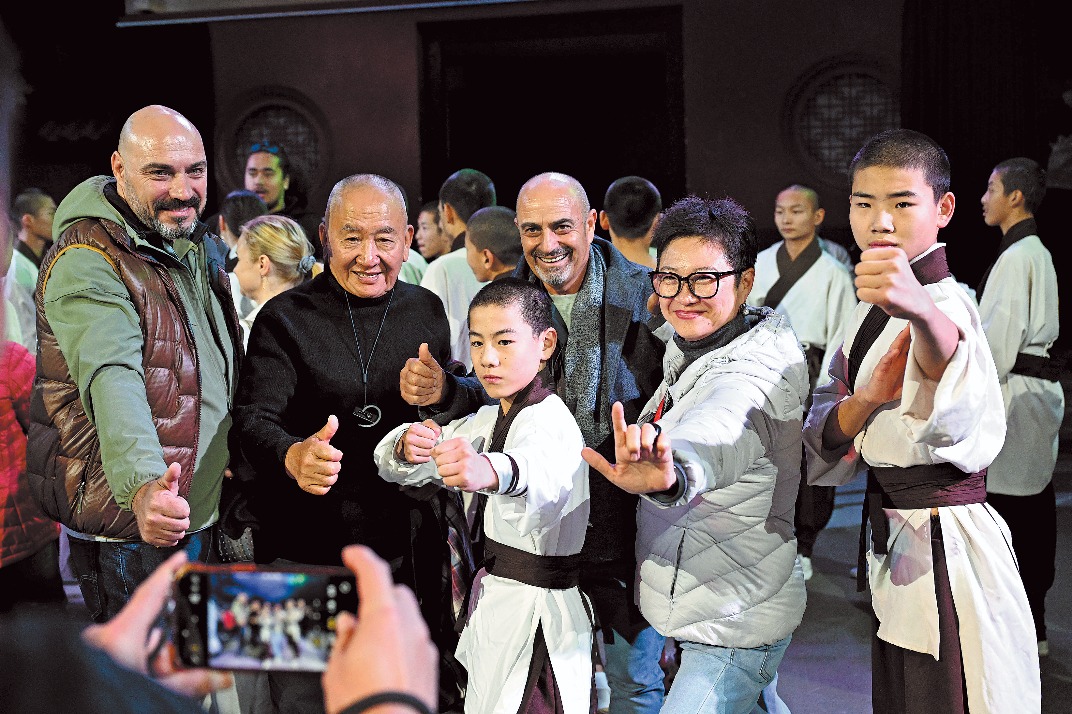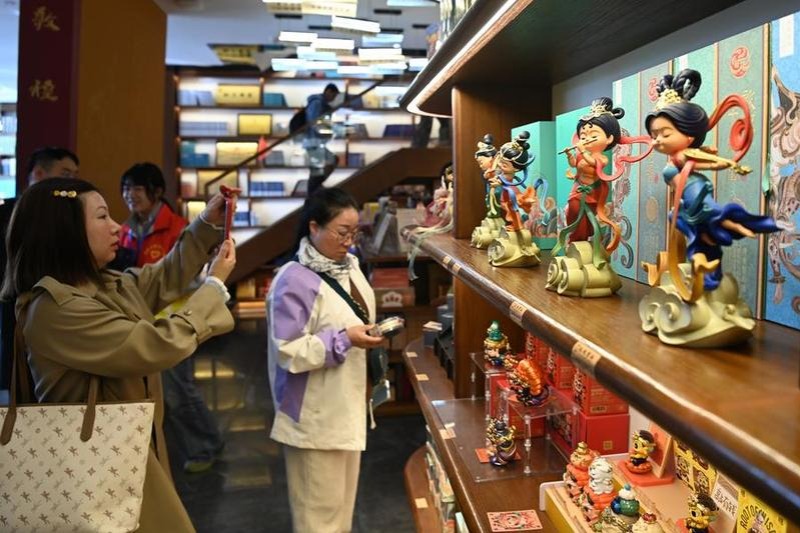Passionate professor passes on Chinese traditional art
Zheng Yong gives students chance to learn more about nation's heritage

The treasured skills found in traditional Chinese artwork are being preserved and passed on locally and further afield by a dedicated university professor in Tianjin.
Zheng Yong, a professor at the School of Arts at the city's Tiangong University, every year passes on his knowledge and skills in traditional Chinese art and crafts, such as lacquerware, ceramics and ink painting, to thousands from primary to university level. The annual program run by Zheng gives hands-on experiences to these students and teaches them more about China's rich cultural heritage.
Ismail Baba Aliyu, a first-year postgraduate student from Nigeria majoring in cultural heritage protection at Tiangong University, said the program had inspired him to focus on preserving and promoting cultural heritage in his home country when he returns.
His classmate, Anamaria Faasoesa Ranadi Visinia from Samoa, who aspires to open a bookstore after graduation, said she hopes it can offer Chinese learning materials and storybooks.
Professor Zheng, who is also the director of the Advanced Research Center for Chinese Material Culture and Lacquer Art, specializes in Chinese lacquerware.
Lacquerware, alongside ceramics and ink painting, is one of China's three major traditional crafts.
As the birthplace of lacquerware craftsmanship, China boasts an unparalleled heritage of ancient lacquer artifacts, and has established itself as a global hub of lacquer culture, Zheng said.
With roots stretching back millennia, lacquer art materials and traditional techniques exhibit exquisite decorative qualities and a unique ability to blend seamlessly with various materials, he added.
Zheng's own works have been showcased at prestigious international conferences and presented as special gifts.
Preserving the authentic essence of the Chinese art form, notably the luminous colors and transparency unique to lacquerware, is of great importance to the professor. "Lacquerware is different from oil painting and propylene ... as you will discover when appreciating them," he said.
Through his daily teaching, Zheng instills in his students an appreciation for the profound wisdom embedded in Chinese traditional crafts, each possessing its own distinct essence and brilliance.
"The art forms never fail to inspire awe among these students. Ceramics, for instance, symbolize the transformative power of ordinary materials into extraordinary creations worthy of museum admiration," he said.
Lacquerware, in particular, captivates students with its natural evolution from raw tree sap into imperishable coatings that have adorned imperial courts for centuries. Zheng remembers a German student who contacted him after graduation, telling him that she had joined a leading Western luxury goods company and always infused traditional Chinese lacquer art color schemes into the brand's products.
Zheng's workshop also offers curated courses on quintessential Chinese crafts like cloisonne enamel, filigree metalwork, glassblowing, lampworking, seal carving and more, showcasing the ingenuity of ancient artisans in manipulating elements to create beauty in daily-use items.
By engaging in hands-on experiences such as molding clay and crafting intricate designs, students bridge the gap between modern learning and China's rich heritage.
"These sessions serve as a gateway for students to appreciate the artistry and cultural significance of heritage crafts, transforming discarded materials into timeless masterpieces that echo the splendor of different eras," Zheng said.
He explained that Chinese culture and craftsmanship are profound and extensive, rooted in the concept of harmony between nature and humanity. The wisdom of ancient artisans is encapsulated in each object, offering a glimpse into the prosperity of every era.
"I believe that the most crucial aspect of promoting them to other parts of the world is to utilize modern media for publicity while also maintaining the oral-teaching tradition, as true knowledge comes from practice," he said.
Videos and textual descriptions cannot capture the awe-inspiring sight of "a single color entering the kiln and thousands of colors emerging", nor can they convey the natural symphony produced by the ice cracks in ceramics or the delight and dopamine rush experienced during the polishing of lacquerware.
"Therefore, exhibitions, experiences and workshops on a global scale are particularly essential," he said.
Last year, during the Chinese Cultural Festival at Hong Kong Polytechnic University, Tiangong University organized an art exhibition and several workshops.
"Through the workshops, we provided teachers and students with a deeper understanding of the techniques and processes of creating these artworks, allowing them to delve further into the realm of traditional Chinese culture and craftsmanship," Zheng said.
The exhibition yielded excellent results, especially with high school students from Lam Tai Fai College in Hong Kong. They were deeply moved by their experience with lacquerware craftsmanship.

Today's Top News
- China, US start economic, trade talks in Kuala Lumpur
- Adapting to local realities fuels new quality productive forces
- World watches as China and US hold new trade talks
- Premier's tour set to deepen E. Asian ties
- Oct 25 named as Taiwan restoration day
- Enhancing sci-tech innovation, self-reliance stressed






























